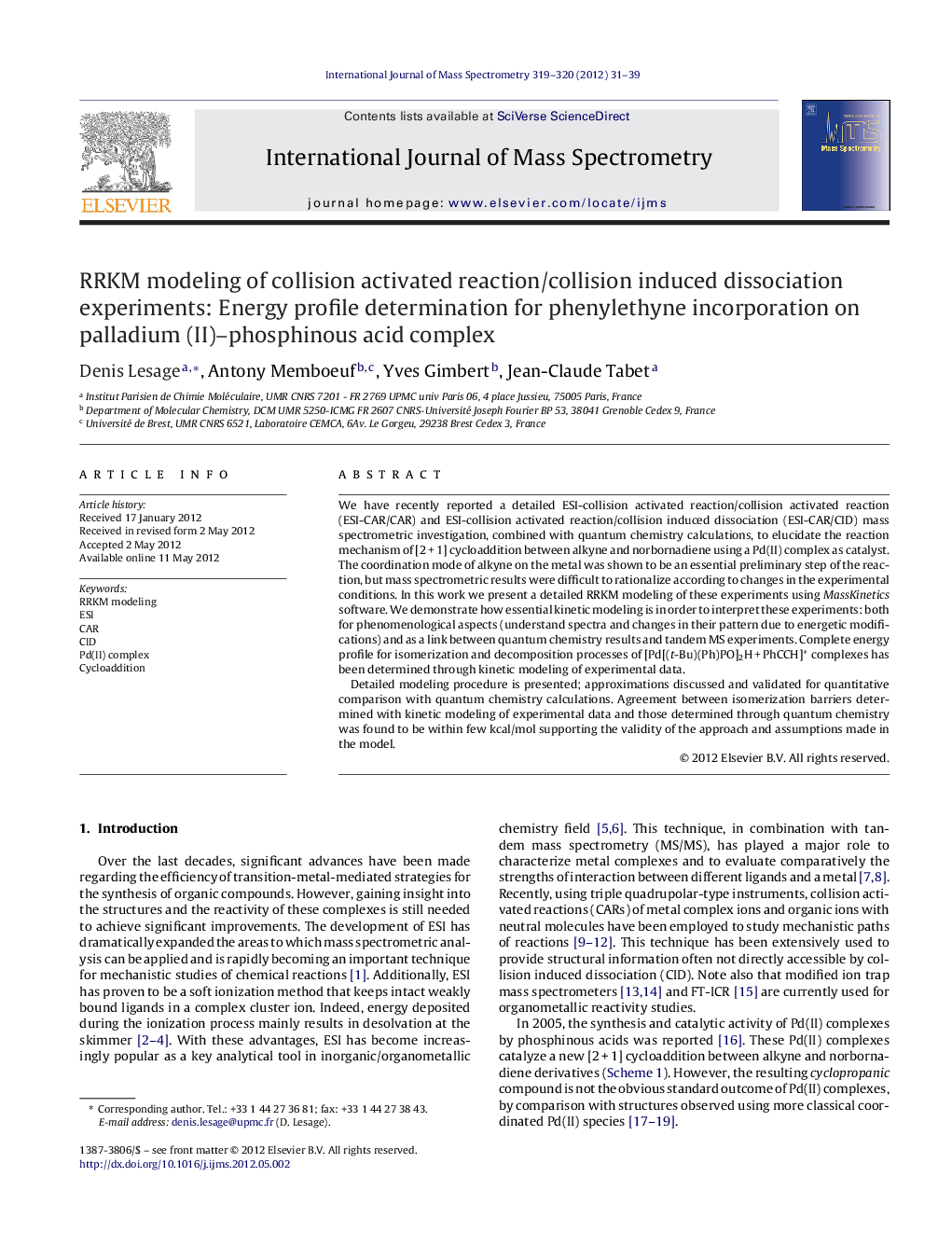| Article ID | Journal | Published Year | Pages | File Type |
|---|---|---|---|---|
| 1192784 | International Journal of Mass Spectrometry | 2012 | 9 Pages |
We have recently reported a detailed ESI-collision activated reaction/collision activated reaction (ESI-CAR/CAR) and ESI-collision activated reaction/collision induced dissociation (ESI-CAR/CID) mass spectrometric investigation, combined with quantum chemistry calculations, to elucidate the reaction mechanism of [2 + 1] cycloaddition between alkyne and norbornadiene using a Pd(II) complex as catalyst. The coordination mode of alkyne on the metal was shown to be an essential preliminary step of the reaction, but mass spectrometric results were difficult to rationalize according to changes in the experimental conditions. In this work we present a detailed RRKM modeling of these experiments using MassKinetics software. We demonstrate how essential kinetic modeling is in order to interpret these experiments: both for phenomenological aspects (understand spectra and changes in their pattern due to energetic modifications) and as a link between quantum chemistry results and tandem MS experiments. Complete energy profile for isomerization and decomposition processes of [Pd[(t-Bu)(Ph)PO]2H + PhCCH]+ complexes has been determined through kinetic modeling of experimental data.Detailed modeling procedure is presented; approximations discussed and validated for quantitative comparison with quantum chemistry calculations. Agreement between isomerization barriers determined with kinetic modeling of experimental data and those determined through quantum chemistry was found to be within few kcal/mol supporting the validity of the approach and assumptions made in the model.
Graphical abstractFigure optionsDownload full-size imageDownload high-quality image (161 K)Download as PowerPoint slideHighlights► We present a RRKM modeling of the coordination of phenylethyne on a Pd(II) phosphinous acid complex. ► Two structures are formed under high pressure collision activated reaction (CAR). ► Deuterated phenylethyne is used to differentiate these two structures. ► Energy profile for isomerization and decomposition processes is determined.
